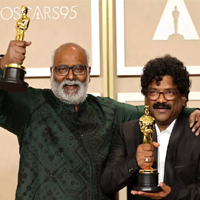The Real Story Behind the Film RRR By Raj Shah
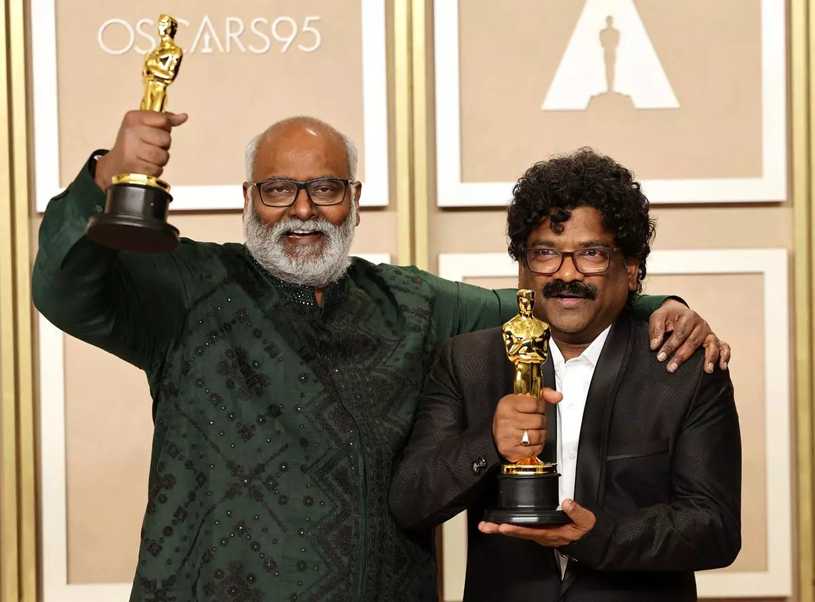
The movie RRR has been making waves in the film industry with its gripping story of rebellion and freedom. But what many people may not know is that the movie was inspired by a real-life revolt that occurred in Andhra Pradesh. The Rampa Revolt of 1922–1924 was an important event in the state’s history and is now finally getting the recognition it deserves.
What was the Rampa Revolt?
The Rampa Revolt was an armed rebellion against British colonial rule in the former Indian princely state of Rampa in Andhra Pradesh, India. It began in May 1879 and lasted for three years until it was put down by the British in 1882. The revolt was led by Alluri Sitarama Raju, who was considered a heroic freedom fighter by the locals. He was joined by hundreds of local people who sought to reclaim their land and assert their rights against the oppressive colonial regime. The revolt resulted in the deaths of around 500 British soldiers and caused significant damage to the region. Although the revolt was eventually suppressed, it became an important symbol of anti-colonial resistance in India. Its legacy lives on today, with its leader Alluri Sitarama Raju being regarded as a symbol of Indian independence and inspiring the recent Telugu film RRR.
The Leaders of the Rampa Revolt
The Rampa Revolt was led by the local tribal leaders Alluri Sitarama Raju and Komaram Bheem. The two were prominent figures in the Telugu-speaking region of Andhra Pradesh and had become increasingly frustrated with the oppressive British rule in their region. Alluri Sitarama Raju was a chieftain of the local hill tribes, while Komaram Bheem was a guerrilla fighter who led several other tribal groups.
The two men, along with their followers, took up arms against the British in an effort to regain control of their region and throw off oppressive colonial rule. They successfully attacked several British military outposts and ultimately declared themselves free of British rule. This was seen as a direct challenge to the Empire, and the British responded by sending in more troops to quell the revolt. However, despite being outnumbered and outgunned, the two leaders and their supporters put up a valiant resistance for several months before ultimately being captured by the British.
The Cause
 The Rampa Revolt, which occurred in 1922-23, was a revolt by tribal people living in the Rampa region of Andhra Pradesh against the British and local landlords. The revolt was triggered by the oppressive taxation and land-grabbing policies of the British, which caused extreme poverty among the tribal population. The British were also known to impose severe punishments on those who opposed their rule.
The Rampa Revolt, which occurred in 1922-23, was a revolt by tribal people living in the Rampa region of Andhra Pradesh against the British and local landlords. The revolt was triggered by the oppressive taxation and land-grabbing policies of the British, which caused extreme poverty among the tribal population. The British were also known to impose severe punishments on those who opposed their rule.
The tribals, who had been oppressed for centuries, finally found an opportunity to express their frustration with the British Raj when the British attempted to seize their lands for a teak plantation. The tribals banded together under the leadership of Alluri Sitarama Raju and other local leaders and fought back fiercely against the British. They launched several raids against the British and their supporters in the local administration, attacking police stations and outposts and looting them of arms, ammunition, and supplies.
The British responded with a massive counter-insurgency operation, deploying troops and deploying punitive measures against the rebels. Despite this, the tribes managed to hold out until they were eventually defeated in 1923. While the rebellion failed, it inspired a legacy of freedom struggles that would later influence other independence movements in India. It also inspired the film RRR, which depicted the story of Alluri Sitarama Raju and his people’s heroic struggle for freedom.
The Madras Forest Act of 1885
The Madras Forest Act of 1885 declared forests as ‘Reserves’, effectively banning the traditional practice of ‘Podu’ or slash-and-burn cultivation, by the tribals. This was bewildering for the tribals, who had been following this practice for thousands of years. Even though the practice of podu had become unsustainable due to environmental degradation, it still remained an integral part of the culture and lifestyle of the tribals. The right to practice Podu was a major demand of the Rampa Rebellion and other tribal revolts in eastern and southern India. These revolts sought to restore the rights of tribal people to access, use, and control forest resources that were increasingly restricted by colonial authorities.
The collection of forest produce
The tribals of the Rampa region were protesting against restrictions on the collection of forest products, including timber and bamboo. For years, these communities had been able to collect and use forest produce for their own sustenance and livelihoods. However, the Forest Department had auctioned off the right to collect produce to private contractors. This triggered deep resentment among the tribals in the region, who felt that their traditional rights to the land were being undermined. The protests that followed led to the Rampa Revolt.
Coolie laborers
The third cause of the Rampa Revolt was the exploitation of the tribals by the British. The tribals were treated as “coolie laborers” and were made to construct roads under extremely brutal working conditions in return for extremely low wages. They were made to work long hours in the hot sun with inadequate food and water, which led to many of them dying from exhaustion. The wages they received were often not enough to meet their basic needs, and the situation soon became unbearable for the tribals. This exploitation, along with the other two causes mentioned earlier, fueled the Rampa Revolt and drove them to rebel against the oppressive British rule.
The Rise of Alluri Sitarama Raju
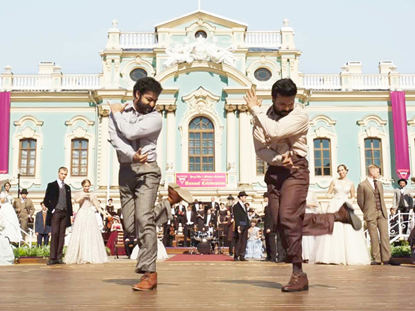 Alluri Sitarama Raju, the leader of the Rampa Revolt and India’s Freedom Fighter against the evil British empire, was born on July 4, 1897, in Pandrangi village in Visakhapatnam District. He was the son of Venkata Rama Raju, a photographer and close associate of senior Congress party leaders. Raju studied at the Mission School in Visakhapatnam. In 1916, he left home and traveled across India, including a spiritual journey to Varanasi, Haridwar, Puri, Bombay, Bharuch, Baroda, Ujjain, Amritsar, Badrinath, Kedarnath, Assam and the Naga Hills. During this time, he interacted with all kinds of people, especially yogis and sadhus. On his return to Andhra Pradesh, Raju rose to prominence as a local leader in the Rampa area. He became an inspiration to many downtrodden tribals, who looked upon him as a ‘Devudu’ or a ‘Messiah’. He used his influence to rally against the oppressive British government and its unjust policies towards the tribals. Raju eventually became the leader of the Rampa Revolt, which sought to protect the rights of the indigenous people.
Alluri Sitarama Raju, the leader of the Rampa Revolt and India’s Freedom Fighter against the evil British empire, was born on July 4, 1897, in Pandrangi village in Visakhapatnam District. He was the son of Venkata Rama Raju, a photographer and close associate of senior Congress party leaders. Raju studied at the Mission School in Visakhapatnam. In 1916, he left home and traveled across India, including a spiritual journey to Varanasi, Haridwar, Puri, Bombay, Bharuch, Baroda, Ujjain, Amritsar, Badrinath, Kedarnath, Assam and the Naga Hills. During this time, he interacted with all kinds of people, especially yogis and sadhus. On his return to Andhra Pradesh, Raju rose to prominence as a local leader in the Rampa area. He became an inspiration to many downtrodden tribals, who looked upon him as a ‘Devudu’ or a ‘Messiah’. He used his influence to rally against the oppressive British government and its unjust policies towards the tribals. Raju eventually became the leader of the Rampa Revolt, which sought to protect the rights of the indigenous people.
Alluri Sitarama Raju arrived in the Rampa area of Andhra Pradesh in July 1917 and began living on top of a hill near Krishna Devi Peta. He soon became the leader of 30-40 tribal villages in the Rampa area, becoming known as ‘Sannyasi Raju’.
The revolt started in Manyam in August 1922 and was heavily influenced by the Non-Cooperation Movement led by Mahatma Gandhi. According to Annapurniah, a childhood friend of Raju said, “In the whole program of Gandhiji, the boycott of courts and liquor appealed to him (Raju). He started a campaign of prohibition… His word was the law… His message spread like wildfire… people gave up drinking in large number”.
Raju and his followers used guerrilla tactics to fight against the British. The revolt lasted for two years and was actively assisted by local villagers and a network of informants. In this way, the Rampa Revolt was able to gather enough momentum to cause a significant disturbance to the British Raj.
Military aggression against Raju
In response to the Rampa Revolt, the Assam Rifles of the British-Indian Army were sent to Rampa to crush the revolt. The British Government announced a cash reward of Rs 1,500 for the capture of Raju and imposed collective fines on villages that sheltered him or his men. A total fine of Rs 5,761 was collected from the area. Moreover, a large number of villagers were arrested and imprisoned for aiding the rebels.
Mr. Tottenham, the then Chief Secretary, noted in his report: “We appear to be no nearer to the end of this business than we were a year ago… As much as possible has been done in a way of persuading and compelling the inhabitants to cooperate with the authorities in combating or betraying Raju and his followers, but these efforts have not been successful.
Raju was captured due to the treachery of a local villager
On May 7, 1924, the leader of the Rampa Revolt, Alluri Sitarama Raju, was captured by the British due to the treachery of a local villager. Raju was tied to a tree, court-martialed, and shot dead, ending the Rampa Revolt. The Evil British Empire has always used this divide and conquer” technique, similar to how Jaichand gave away information about Raju’s whereabouts to the British in exchange for his own freedom. Raju was captured
Alluri Sitarama Raju was the leader of the Rampa Revolt, a movement against British rule in the Visakhapatnam district of Andhra Pradesh. Sadly, Raju was captured by the British due to the treachery of a local villager. He was court martialed and shot dead, effectively ending the Rampa Revolt. The evil British Empire had used the “divide and conquer” policy to keep their colonial grip in India, and this was true in the case of Raju as well.
In an attempt to honor the legacy of Alluri Sitarama Raju, the Andhra Pradesh government carved out a new district from Visakhapatnam District and named it after him.
How did Komaram Bheem help Alluri Sitarama Raju?
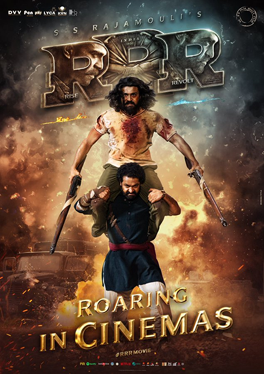 Komaram Bheem, the legendary folk hero of Telangana and the leader of the Adivasi struggle, was a close friend and ally of Alluri Sitarama Raju. He supported Raju in his efforts to liberate the Adivasis of Rampa and fight against the oppressive Zamindari system.
Komaram Bheem, the legendary folk hero of Telangana and the leader of the Adivasi struggle, was a close friend and ally of Alluri Sitarama Raju. He supported Raju in his efforts to liberate the Adivasis of Rampa and fight against the oppressive Zamindari system.
Bheem, who was born in a family of farmers and had fought against the Nizam of Hyderabad, joined Raju in his fight against the British in Rampa. He helped Raju lead large groups of Adivasis from villages around Rampa in their revolt against the British. He also fought alongside Raju in the battle at Chintapalli and provided moral support and encouragement to Raju’s fighters.
Bheem’s help to Raju is evident not only in the direct support he provided but also in his own leadership of the Adivasi rebellion that followed Raju’s death. After Raju was killed by the British forces, Bheem took up the mantle and continued to fight for the rights of the Adivasis. He fought for a free and independent India, uniting several other Adivasi groups across India in his cause. His actions inspired many other Adivasi groups to take up arms against their oppressors and fight for their freedom.
The help that Komaram Bheem gave Alluri Sitarama Raju was instrumental in the success of the Rampa Revolt, and it continues to inspire people all over India to this day.
What were the consequences of the revolt?
The Rampa Revolt had a significant impact on Andhra Pradesh’s social and political landscape. It marked the beginning of a period of radicalization, where the locals began to resist oppressive authorities. The revolt served as an inspiration for future revolutionaries, who sought to overthrow oppressive structures.
The revolt also forced the British to grant certain concessions to the local people, such as greater access to the forests. This was a significant step towards modernizing the area, as it enabled the villagers to utilize the resources around them in a more effective manner.
The consequences of the Rampa Revolt were also felt in the political sphere. The revolt helped to consolidate power in the hands of the local leaders, as they had demonstrated their ability to organize and lead a successful movement against a powerful oppressor. This newfound confidence helped them to secure greater autonomy from the British government and gain recognition as legitimate representatives of their people.
The Rampa Revolt ultimately had far-reaching consequences that are still being felt today. While the revolt itself may have been short-lived, its impact on Andhra Pradesh’s history and culture will remain long after the events have passed into memory.
How did the revolt inspire the film RRR?
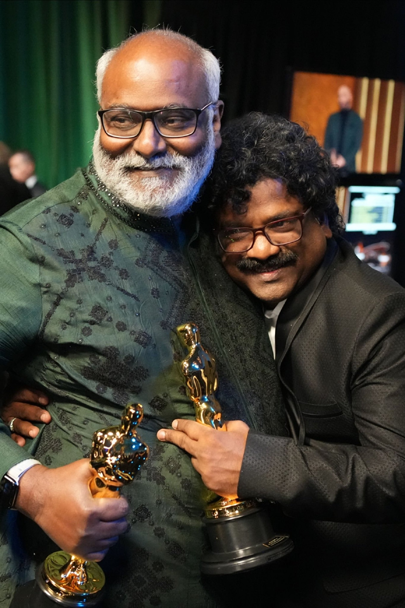 The story of the Rampa Revolt has inspired a major Bollywood movie, RRR. Directed by SS Rajamouli, this film is set in the 1920s in the backdrop of the British Raj in India. The movie RRR is based on the heroic story of Alluri Sitarama Raju and his fight against the British Empire. It is an epic drama about two legendary freedom fighters, Alluri Sitarama Raju and Komaram Bheem, who fought for the liberation of their people from oppressive British rule.
The story of the Rampa Revolt has inspired a major Bollywood movie, RRR. Directed by SS Rajamouli, this film is set in the 1920s in the backdrop of the British Raj in India. The movie RRR is based on the heroic story of Alluri Sitarama Raju and his fight against the British Empire. It is an epic drama about two legendary freedom fighters, Alluri Sitarama Raju and Komaram Bheem, who fought for the liberation of their people from oppressive British rule.
The movie draws inspiration from the true events that took place during the Rampa Rebellion. It reflects on how two powerful leaders, with very different ideologies, came together to fight for the freedom of their people. The movie also portrays how their stories are entwined and how each of them contributed to the struggle for freedom in India.
RRR pays homage to both Alluri Sitarama Raju and Komaram Bheem. While both men fought against British rule, they also understood the importance of working together to achieve a common goal. The movie delves into the relationship between Raju and Bheem and shows how they combined their strengths and put aside their differences to come up with a plan to free their people.
The movie also captures the essence of how Raju’s leadership and fighting spirit inspired many of his followers to take part in the revolt. It was this courage and determination that eventually led to the defeat of the British forces.
Overall, RRR does an excellent job of capturing the spirit of the Rampa Revolt and highlighting its importance in Indian history. It shows how the courage and resilience of Alluri Sitarama Raju and Komaram Bheem can inspire people even today. The movie serves as a reminder that no matter how powerful our oppressors might be, we can still stand up for what is right and fight for justice.
RRR Movie Wins Awards in India
The highly acclaimed movie RRR has made waves in India and abroad, winning numerous awards both in India and in the West. Directed by S.S. Rajamouli and starring Ram Charan and Junior NTR, the movie was praised for its stunning visuals and thrilling action sequences. The movie has won several awards from prestigious organizations like the National Film Awards, the Filmfare Awards, and the International Indian Film Academy Awards. In addition, the movie also won several awards at the International Film Festivals in Europe and the United States.
The highly-inspirational movie, RRR, recently won several awards in India and in the west. Directed by SS Rajamouli, the movie featured an impressive cast of some of the best names in the Indian film industry, including Ram Charan, Jr. NTR, Alia Bhatt, Ajay Devgan, and others.
The movie, set in pre-independence India, follows two revolutionaries, Alluri Sitarama Raju (Ram Charan) and Komaram Bheem (Jr. NTR), who fight against British rule and strive to gain freedom for their people. The movie highlights the sacrifices made by these two individuals and serves as a reminder of the struggle for independence.
The movie RRR has won a slew of awards in India for its excellence in various categories. At the 65th Filmfare Awards, it won Best Film, Best Director, Best Actor and Best Music Director. At the Zee Cine Awards, it won the Best Film award, along with the Audience Choice Award for Best Film.
At the Indian National Film Awards, Movie RRR was awarded the prestigious Dadasaheb Phalke Award for Best Feature Film. It also won awards for Best Supporting Actor, Best Editing, Best Cinematography, and Best Action Choreography.
At the South Indian International Movie Awards (SIIMA), Movie RRR won five awards: Best Picture, Best Director, Best Music Director, Best Cinematography and Best Male Playback Singer. It also won the National Award for Best Special Effects.
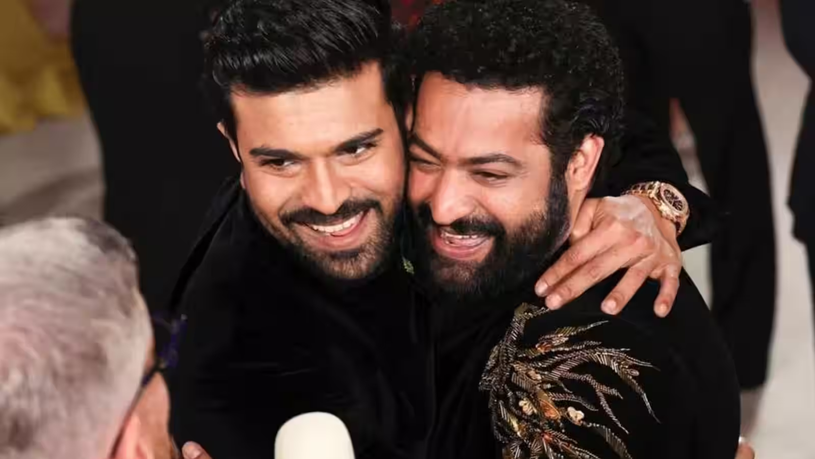
At the 66th National Film Awards, Movie RRR won two awards: Best Feature Film and Best Action Choreography. It also won numerous awards at the Indian Panorama, including Best Feature Film, Best Editing and Best Sound Design.
The movie also received recognition from international film festivals, winning multiple awards at the Shanghai International Film Festival, including Outstanding Achievement in Directing, Outstanding Achievement in Technical Field and Outstanding Achievement in Art Direction
The movie’s visuals are breathtaking and its themes of courage and heroism resonated with many viewers across the country. The movie’s cinematography has also been praised, with many applauding the beautiful shots of the Indian landscape. Furthermore, the movie’s music was composed by MM Keeravani, who worked with Rajamouli on his earlier films, and is sure to be remembered as one of his best works.
Overall, RRR has been met with great success and appreciation from both critics and viewers alike, making it one of the most highly acclaimed movies of 2021. It’s no wonder that it has won several awards in India and the West.
The awards won by Movie RRR in the west
The movie RRR has won several awards in the west, most notably at the 2021 Academy Awards where it was nominated for Best Picture, Best Director, and Best Original Screenplay. It also won the Critics Choice Award for Best Foreign Language Film and the Golden Globe Award for Best Motion Picture. At the BAFTA Awards, the film received nominations for Best Cinematography and Best Score. Additionally, it was recognized with awards at the Independent Spirit Awards and British Independent Film Awards. The film was well-received by critics and audiences alike, earning critical acclaim and numerous awards in the West.
The awards won by the song Naatu Naatu
The song Naatu Naatu from the movie RRR has made history by winning both an Oscar and a Golden Globe.
| Awards | Date of ceremony | Category |
|---|---|---|
| Academy Awards | 12 March 2023 | Best Original Song |
| Critics’ Choice Awards | 15 January 2023 | Best Song |
| Georgia Film Critics Association | 13 January 2023 | Best Original Song |
| Golden Globe Awards | 10 January 2023 | Best Original Song |
| Hollywood Critics Association | 24 February 2023 | Best Original Song |
| Houston Film Critics Society | 18 February 2023 | Best Original Song |
| Online Film Critics Society | 23 January 2023 | Original Song |
| Satellite Awards | 3 March 2023 | Best Original Song |
The song has also won several accolades, including the M.A. Award for Best Music Video at the American Indie Music Awards and the Grand Prix Award at the Cannes Lions International Festival of Creativity. It has also been featured in several renowned international magazines, such as Vogue, Harper’s Bazaar, GQ, and more.
The song is about the courage and strength of a soldier fighting for his country, and it sends out a strong message to viewers. It has been praised for its strong melody and meaningful lyrics. The success of this song was a major contributing factor in the movie’s success, as well as its other award wins.
This is a great achievement for the movie RRR, and it highlights the hard work of the cast and crew involved. This is definitely something to celebrate, and we are sure that this success will inspire more artists to come forward with their creative work.
About the Author
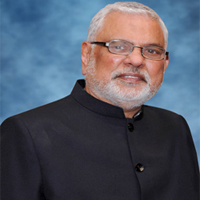 A software engineer by profession, Indian culture enthusiast, ardent promoter of hinduism, and a cancer survivor, Raj Shah is a managing editor of Desh-Videsh Magazine and co-founder of Desh Videsh Media Group. Promoting the rich culture and heritage of India and Hinduism has been his motto ever since he arrived in the US in 1969.
A software engineer by profession, Indian culture enthusiast, ardent promoter of hinduism, and a cancer survivor, Raj Shah is a managing editor of Desh-Videsh Magazine and co-founder of Desh Videsh Media Group. Promoting the rich culture and heritage of India and Hinduism has been his motto ever since he arrived in the US in 1969.
He has been instrumental in starting and promoting several community organizations such as the Indian Religious and Cultural Center and International Hindu University. Raj has written two books on Hinduism titled Chronology of Hinduism and Understanding Hinduism. He has also written several children books focusing on Hindu culture and religion.

